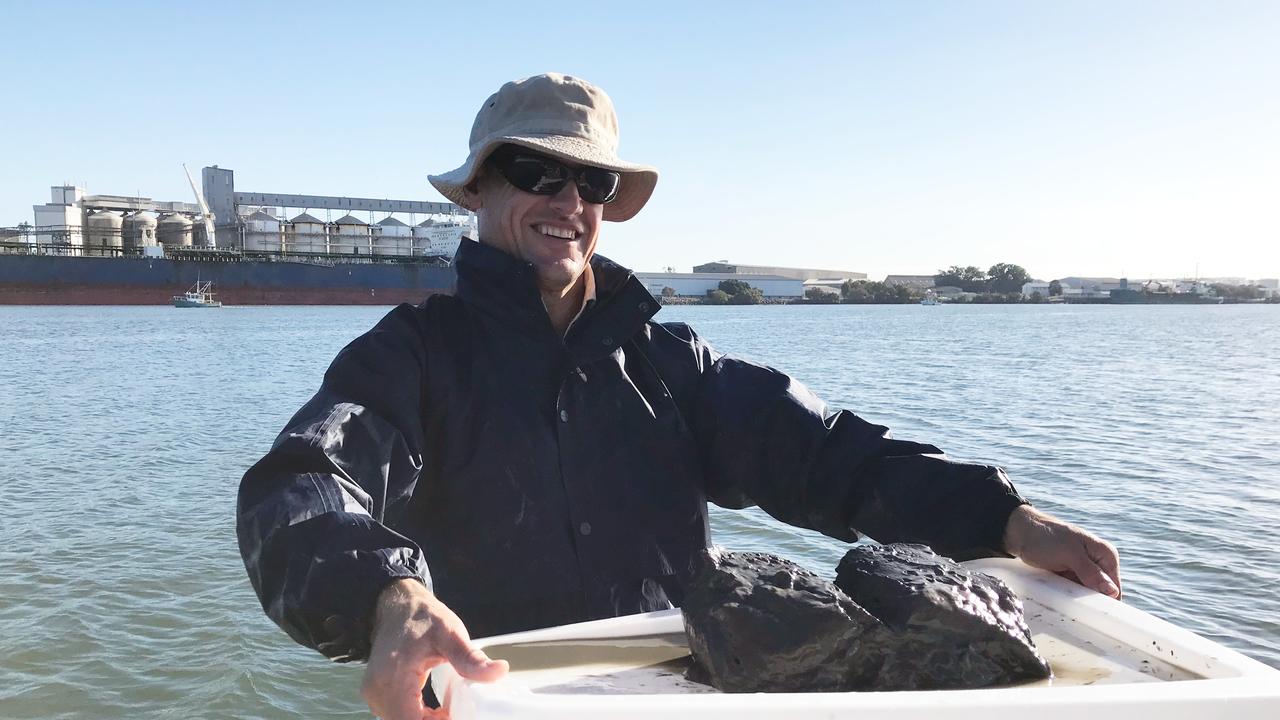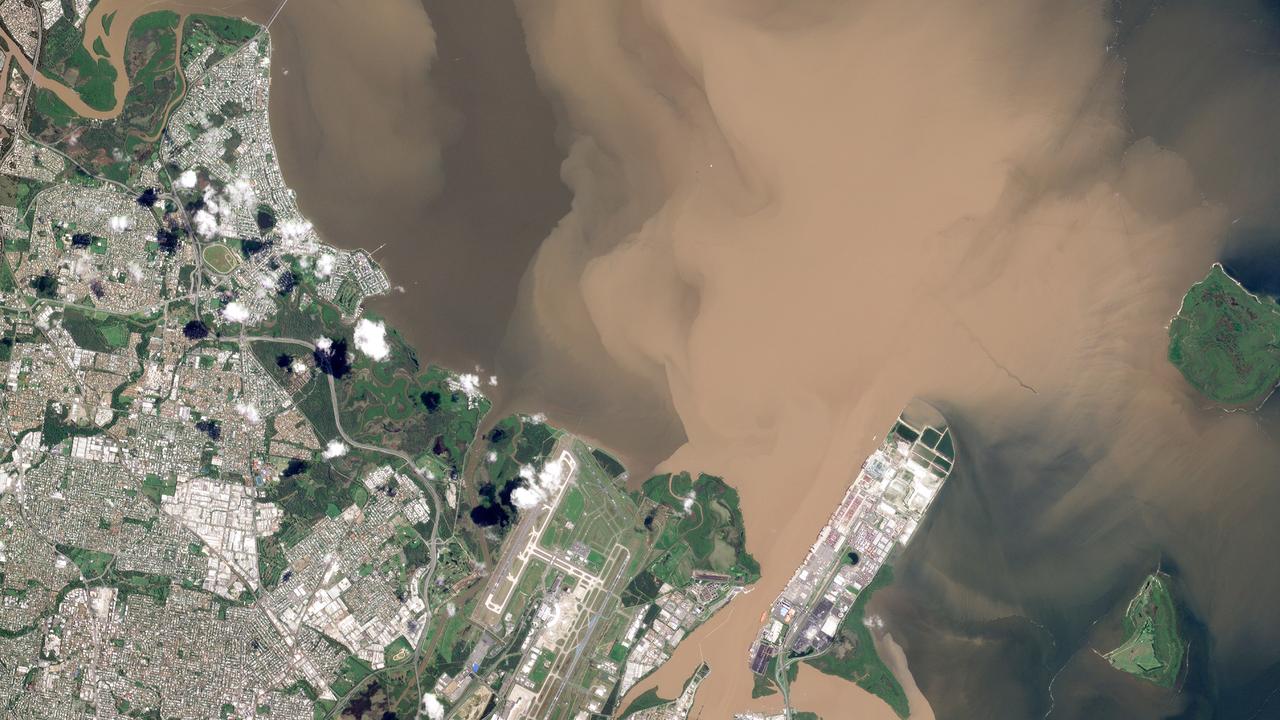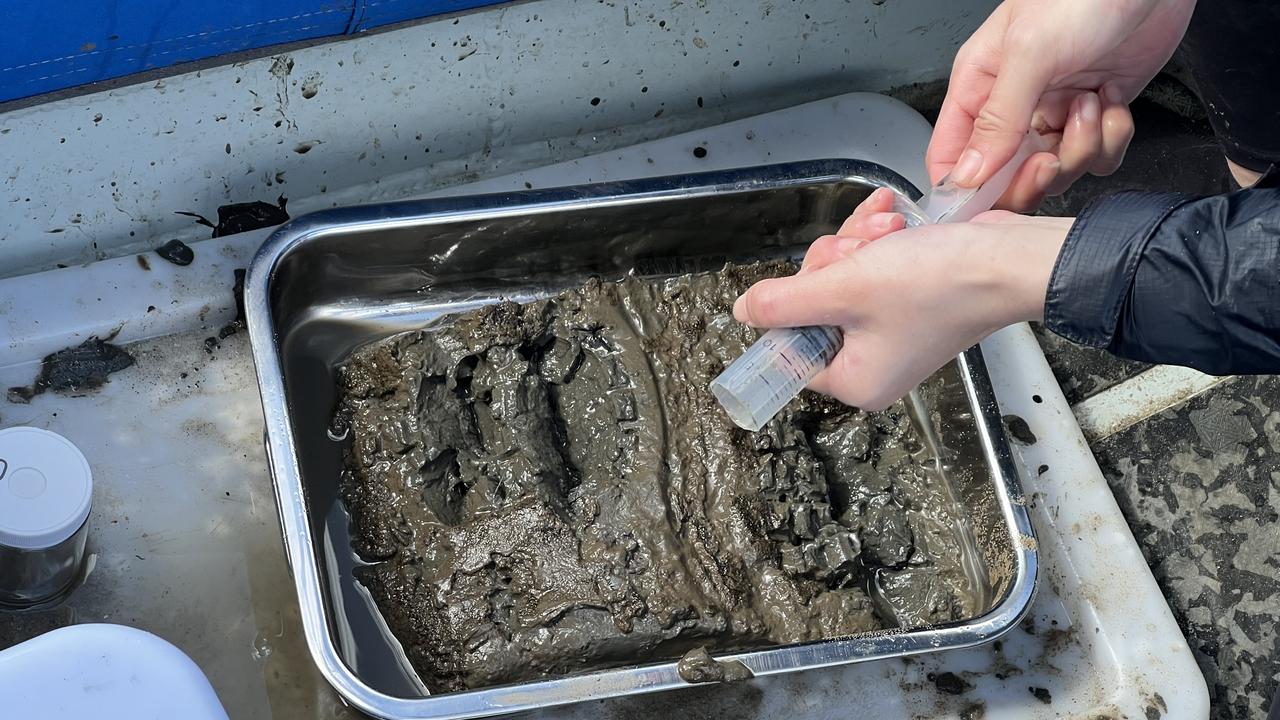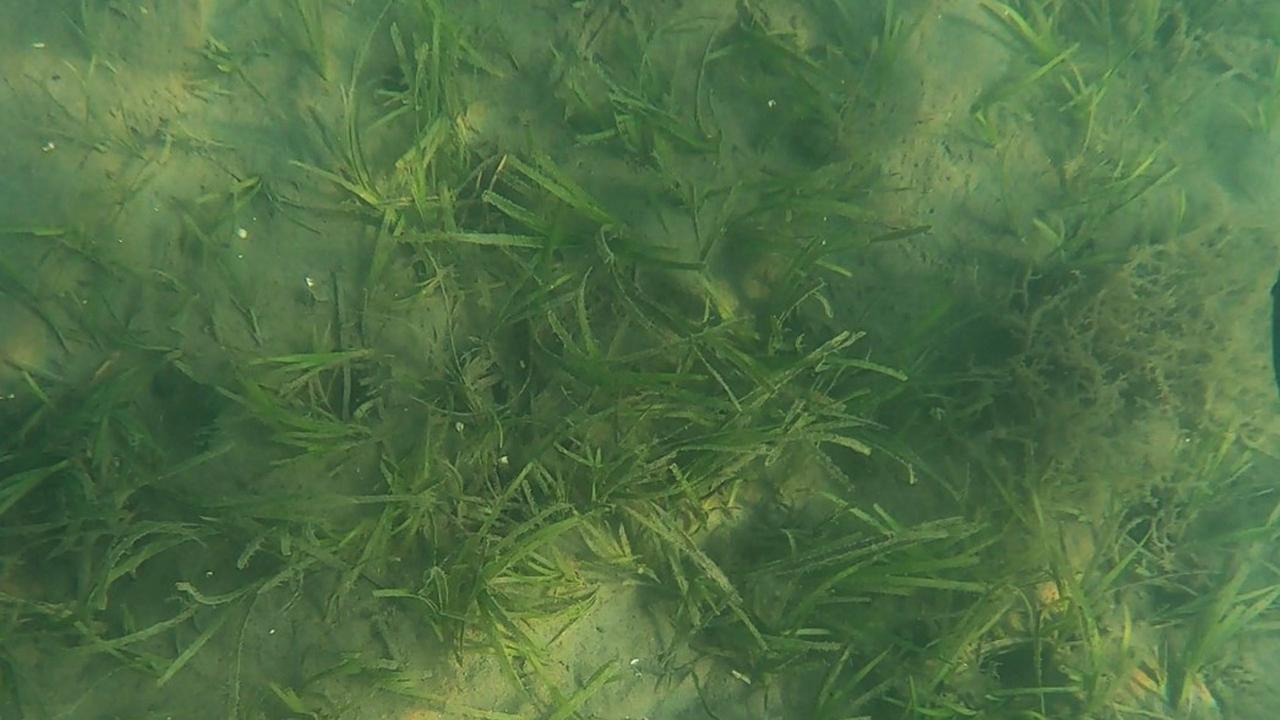Sludge creates ‘dead zone’ in idyllic Moreton Bay, study finds
Scientists have compared vast amounts of mud flowing into a water body famous for its animal life as being like “180 years of sewage discharge”.
A new study has found sludge being washed into Queensland’s Moreton Bay is contaminating its sand and creating a “dead zone” in the idyllic coastal area.
Researchers from the University of Queensland have released a report showing 98 per cent of the bay’s floor was covered with a layer of mud, thanks to a series of flood events.
Dr Alistair Grinham said these “insidious” deposits were changing the nature of the seabed and impacting on water chemistry.
“We estimate the amount of ammonium the sediment is contributing to the bay’s water to be equivalent to 180 years of sewage plant discharges,” he said.

“When you load a system with nutrients and mud like this, phytoplankton thrive and block sunlight reaching the seabed which is already being smothered by mud and these factors changes what can live there.
“It is a process already underway in Moreton Bay.”
The bay is known as a hotbed of marine life, and is home to turtles, sharks, stingrays, gropers, tropical fish, dolphins, dugongs and humpback whales during migration season.
Dr Grinham said a “soupy mess” of mud was being funnelled into the bay as a result of channel erosion in the catchments that flow into the water body.
He said in the past 54 years the amount of clean sand in Moreton Bay had dropped from 400 square km to just 30 square km.
The study used samples taken from 47 sites in the water north of Brisbane which were collected three days after the city’s major flood event in 2022.
“That was really surprising to see how much (mud) had come into the bay,” Dr Grinham said.

Results were then compared samples taken from previous studies in 1070, 2015 and 2019.
“Over the past 50 years, 300 million cubic metres of mud has been washed into Moreton Bay – that’s enough to fill 300 Suncorp stadiums,” Dr Grinham said.
“A lot of the mud has collected in the central bay where the water is deeper and wind and tidal currents can’t disperse it.
“This is where a big mud zone is growing and puts at risk the great habitat wealth of Moreton Bay.”


He said with more frequent extreme weather events predicted in the future due to climate change, restoration of water catchments that flow into the bay was “desperately needed”.
“Without restoration work, eventually Moreton Bay will not be able to bounce back from a flood event,” Dr Grinham said.
A separate study by the university’s alliance for environmental health sciences found there could be up to 7000 tonnes of microplastics polluting the bay’s ecosystems.
Dr Elvis Okoffo said the level of plastic contamination was “equivalent to three Olympic swimming pools full of plastic or 1.5 million single use plastic bags”.
The types of plastics found were used for such items as food wrapping, bags and bottles, building materials, electronics and clothing.





